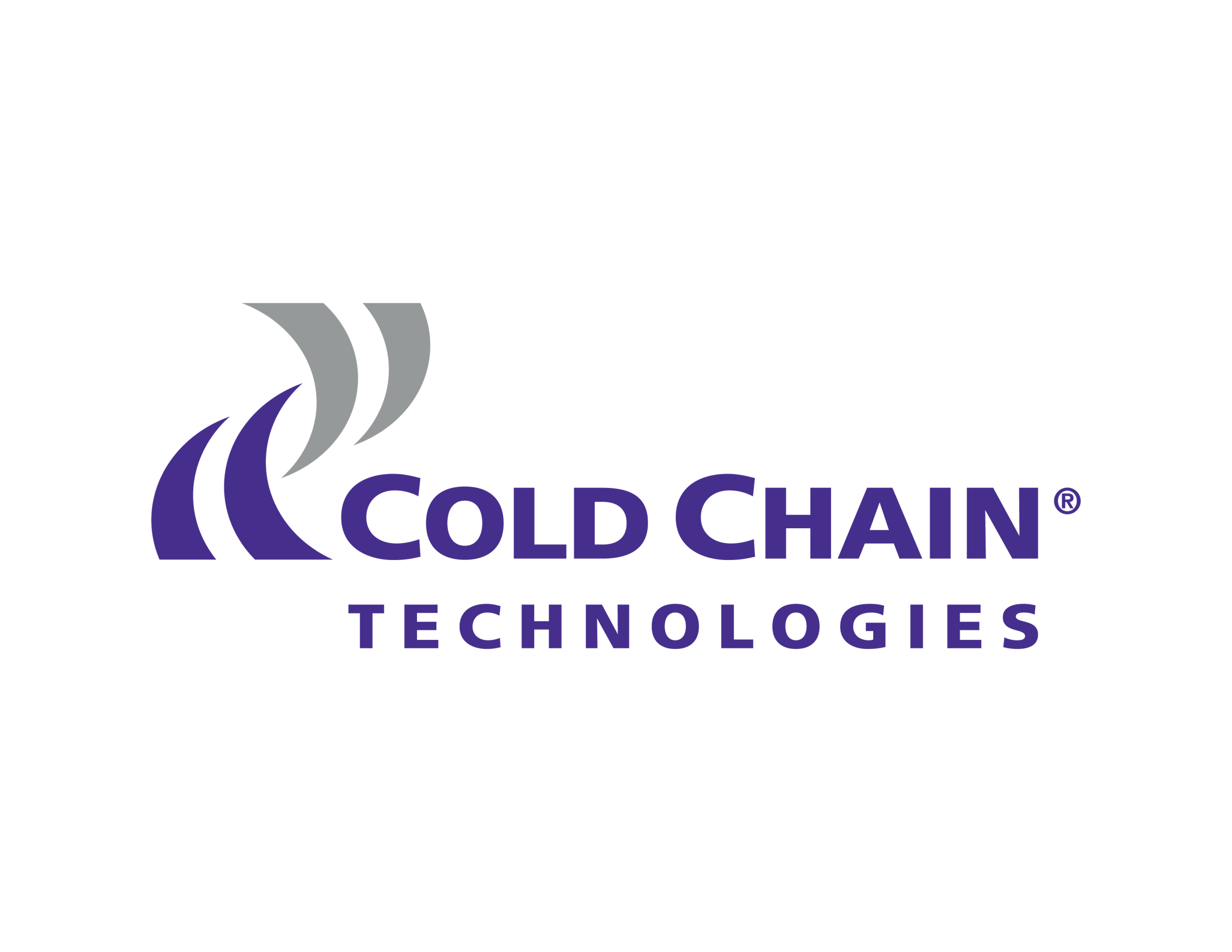Learn how thermal covers limit temperature excursions and variations during shipping and transport
Temperature variations can have devastating effects on your products. Think of what it feels like on a moderately hot day to stand outside in parking lot or to sit inside your car with the windows rolled up. You become hot and sweaty very quickly.
And this is what your controlled room temperature (CRT) products experience when left sitting on the tarmac waiting for loading or inside transport trucks on their way to delivery.
When the ambient temperature reaches 32°C (90°F) – the temperature under film-based protective covers or wraps can reach 75°C or higher (167°F). These temperatures can have devastating effects on your products.
This is exactly why thermal cargo covers are a critical part of your cold chain management solution. Keeping your CRT and pharmaceutical products within the approved temperature range must be a priority and cannot be an afterthought. Pharmaceuticals, chemicals, medical devices, and other products cannot tolerate the temperature variations and excursions that happen regularly during shipping, transport, storage, and receiving.
Data from a 2011 University of California study underscores the reality of what is really happening on the tarmac in the spring – temperatures of 24°C (75°F) can result in tarmac temperatures of 40°C (104°F). Couple this with the reality that our planet is warming and many areas are seeing higher than normal temperatures, and you have a powerful case for making thermal pallet covers part of your cold chain management strategy.
How are you protecting your perishable, pharmaceutical, and CRT products against cold chain hazards and risks?
What is a Thermal Cargo Cover?
A thermal cargo cover is designed to protect temperature sensitive goods shipped by air and land from the effects of the external environment. Thermal cargo covers are also called pallet covers, insulated pallet covers, thermal pallet covers, and cargo covers.
Regardless of the name, these passive thermal solutions protect CRT products from a range of shipping and transport hazards including:
- Extreme ambient temperatures
- Radiation, including solar radiation and emitted radiation from the tarmac
- Weather including rain, sleet, snow, and wind
- Theft and damage
Thermal cargo covers should be used to protect a range of CRT products including pharmaceutical ingredients, chemicals, medical devices, cosmetics, perishable food products, and electronics.
The Importance of Protecting Against Temperature Excursions
The biggest threat to your CRT and pharmaceutical products is temperature and the risk of a temperature excursion. Any level of temperature excursion has the power to ruin product quality and safety. These risks alone have far-reaching impacts to your company, brand, and the health and safety of the public.
- According to the International Air Transport Association (IATA), almost 60% of all temperature excursions occur due to tarmac delays.
- A Georgia Tech University survey found that 90% of temperature excursions were the result of human error, with the vast majority attributed to errors during pack-out.
While tarmac and other delays such as transport trucks stuck at border crossings or stranded container ships are beyond your control, there are steps you can take to limit temperature excursions from the outset.
As part of your cold chain management process, make sure you take these 5 steps to limit the risk of temperature excursions and variations:
Train personnel involved in the packaging and shipping logistics for CRT products on temperature ranges, best practices for packaging CRT products, and what to do in the event of a temperature excursion.
Communicate clearly with your cold chain shipping partners to ensure everyone is clear on the requirements and regulations around shipping and transporting CRT products.
Define a disaster recovery or emergency response plan should there be an unexpected interruption to your cold supply chain. You need to be ready and prepared for weather delays and extreme weather variations, clogged and closed ports, delays on the tarmac and at border crossings, personnel shortages, and more.
Know your passive thermal solution options and work with your cold chain packaging partner to determine the best possible packaging solutions for your products. Take advantage of services such as a cold chain best practices gap analysis and inventory and logistics management to develop the best possible cold chain solution for your CRT products.
Use the latest in passive thermal solution technologies and products. New technologies and products such as Bluetooth monitoring and sensors, GPS, and reflective and breathable materials play a key role in limiting temperature excursions and maintaining the integrity of your cold chain products.
- Product waste and loss
- Degradations in product quality, safety, and efficacy
- Risks to public health and safety
- Loss of trust and viability in your company, brand, and products
Risk During Cold Chain Transportation and Shipping
Risk is always a factor in the cold chain, but for companies, 3PLs, shippers, and your customers, the greatest risks occur during the transportation and shipping of your CRT and pharmaceutical products.
Make sure you know and plan for these risks during cold chain transportation and shipping:
- Extreme ambient temperatures
- Solar radiation and emitted radiation from the tarmac
- Precipitation
- Heat generated by respiring perishable products trapped under a protective cover
- Using film based wraps and covers
- Selecting thermal covers or blankets based on thermal chamber testing data and the ‘R’ value
- Amount of time your products are left on the tarmac before, during, and after shipping and transport:
- A recent survey reveals that 38% of temperature control logistics experts say product spoilage left on the airport tarmac is a large challenge, with 21% of respondents saying this challenge costs them significant amounts of money.
- Cold chain operator challenges for shippers and 3PLs including improper handling of goods, regulatory compliance, temperature monitoring, and lack of infrastructure investments:
- The 2022 26th Annual Third-Party Logistics Study reveals that 62% of surveyed shippers say that proper handling is their top challenge and for 38% regulatory compliance is their top challenge. In the same survey, 75% of 3PLs say infrastructure investments and maintenance are their biggest challenges while 50% of 3PLs say temperature monitoring is their biggest challenge.
Thermal Cargo Covers and Your CRT and Pharmaceutical Products
The right thermal cargo cover can protect your CRT and pharmaceutical products from temperature excursions and other risks throughout the cold chain. However, not all thermal cargo covers are the same.
Choose a thermal cover that is engineered to protect against cold chain breaks.
You need a thermal cover that meets the real-world demands of shipping, transport, storage, and human error.
Reflective:
because solar radiation is a major factor in temperature excursions, it’s critical your thermal covers are designed to reflect this radiation. Choose a science-backed thermal cover that is proven to reflect UV energy and maintain load temperatures at 1°C above ambient temperature.
Breathable:
condensation and trapped gasses are a major factor in altering moisture levels and causing water damage to primary and tertiary packaging and labelling. Choose a thermal cover designed to allow gas, condensation, vapour, and moisture to escape the cover – ensuring these hazards are not trapped inside your pallets.
Durable:
CRT and pharmaceutical products are at the mercy of wind, rain, sleet, snow, debris (sticks, rocks, sand, etc.), airborne contamination, pests, and human and mechanical behaviors that can rip or tear packaging or spill contaminants on pallets and packaging. Choose a thermal cover that has undergone rigorous hazard and risk testing.

Recyclable:
sustainable and reusable passive thermal solutions must be a priority. Choose a thermal cargo cover that can be recycled into a range of materials including lumber and marine engineering products, pallets, park benches, playground equipment, and more.
Easy-To-Use:
because time is a critical factor in your cold chain management process, you need a lightweight thermal cover that can be easily installed on a pallet and quickly removed and packed down for storage and transportation.
Thermal Cargo Cover Checklist
Use this thermal cargo cover checklist during your research and conversations with cold chain packaging providers and manufacturers:
- How is the thermal cargo cover tested? What types of temperature and weather hazards can it tolerate?
- What materials are used and how do these materials reflect solar radiation?
- Is the thermal cover breathable?
- How does the thermal cover protect from temperature excursions including heat and cold?
- Can I install the thermal cover easily and quickly?
- Where are the case studies and data showing how this thermal cover compares to competitors?
- Is the thermal cover specifically designed and engineered to protect CRT and pharmaceutical products?
- Is the thermal cover recommended for air freight and/or land freight?
- Does the thermal cover do more than protect against temperature excursions? Can it protect against a range of cold chain transportation and shipping risks and hazards?
Contact us to learn about CCT Thermal Covers, powered by Tyvek®, and how our thermal cargo covers give you advanced multi-threat protection at an affordable price.
At Cold Chain Tech, we put a priority on telling you what we know about cold chain solutions, packaging, and management. This is what we do – we are experts in cold chain packaging solutions.
Sign up for Cold Chain Tech blog updates to learn the latest in all aspects of cold chain solutions management, reusable cold chain packaging solutions, and how the Cold Chain Tech team helps you maintain the integrity, safety, and quality of your temperature-sensitive products.


